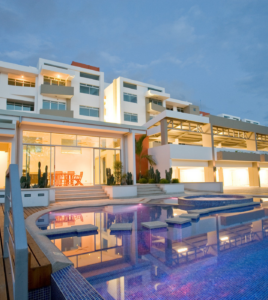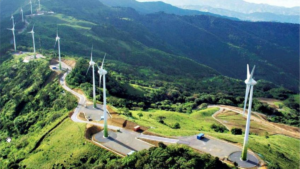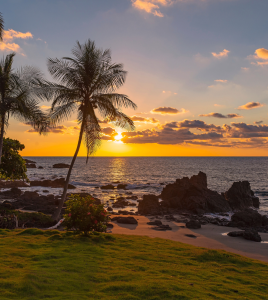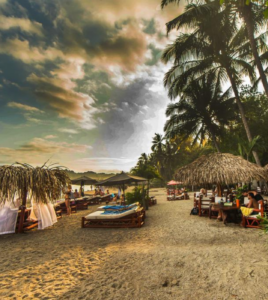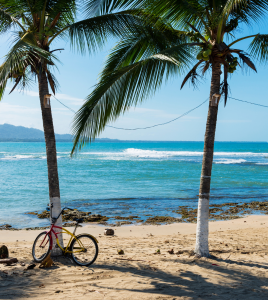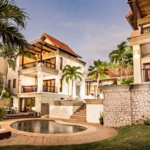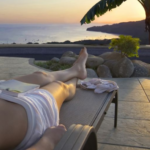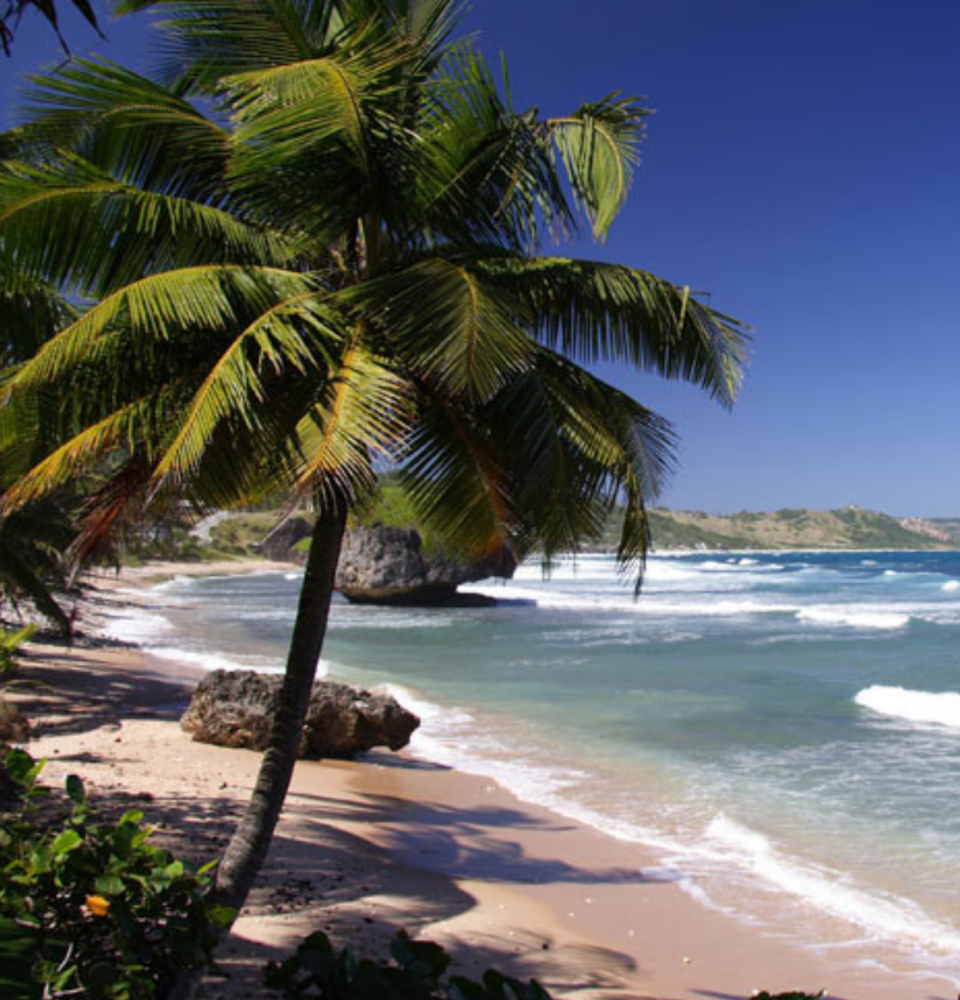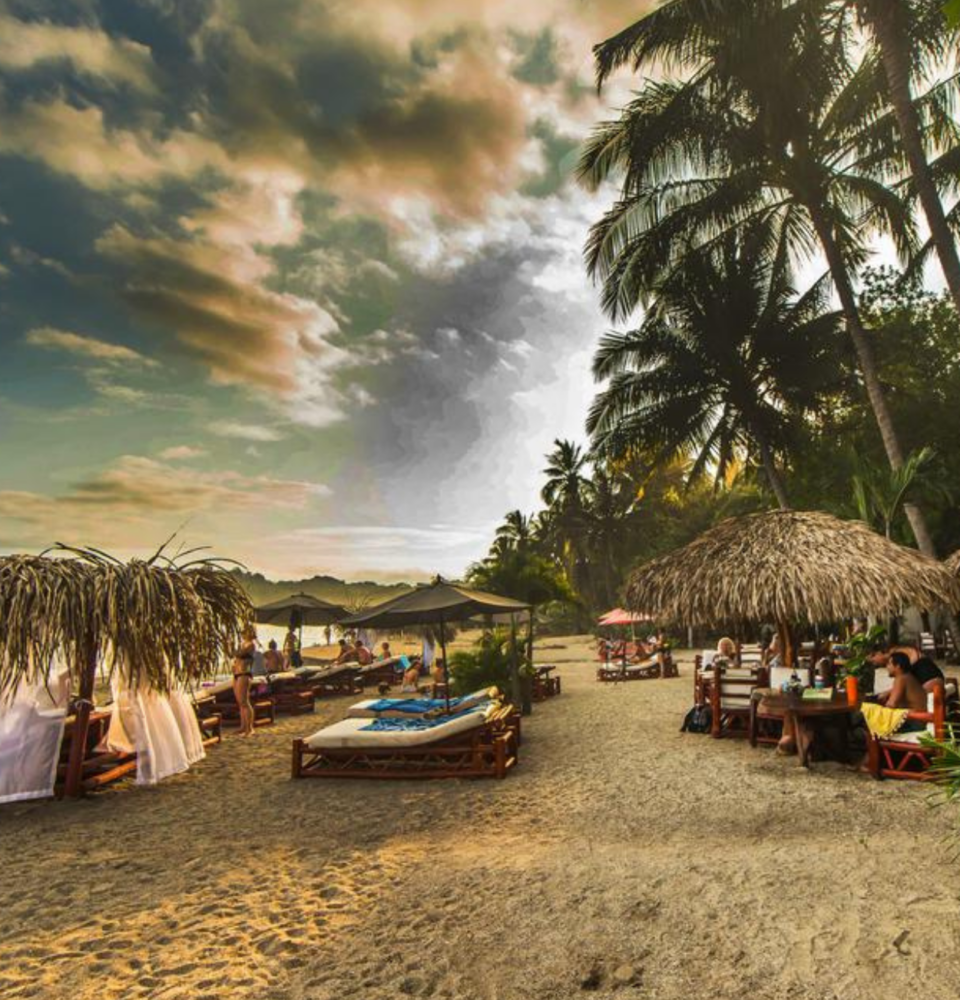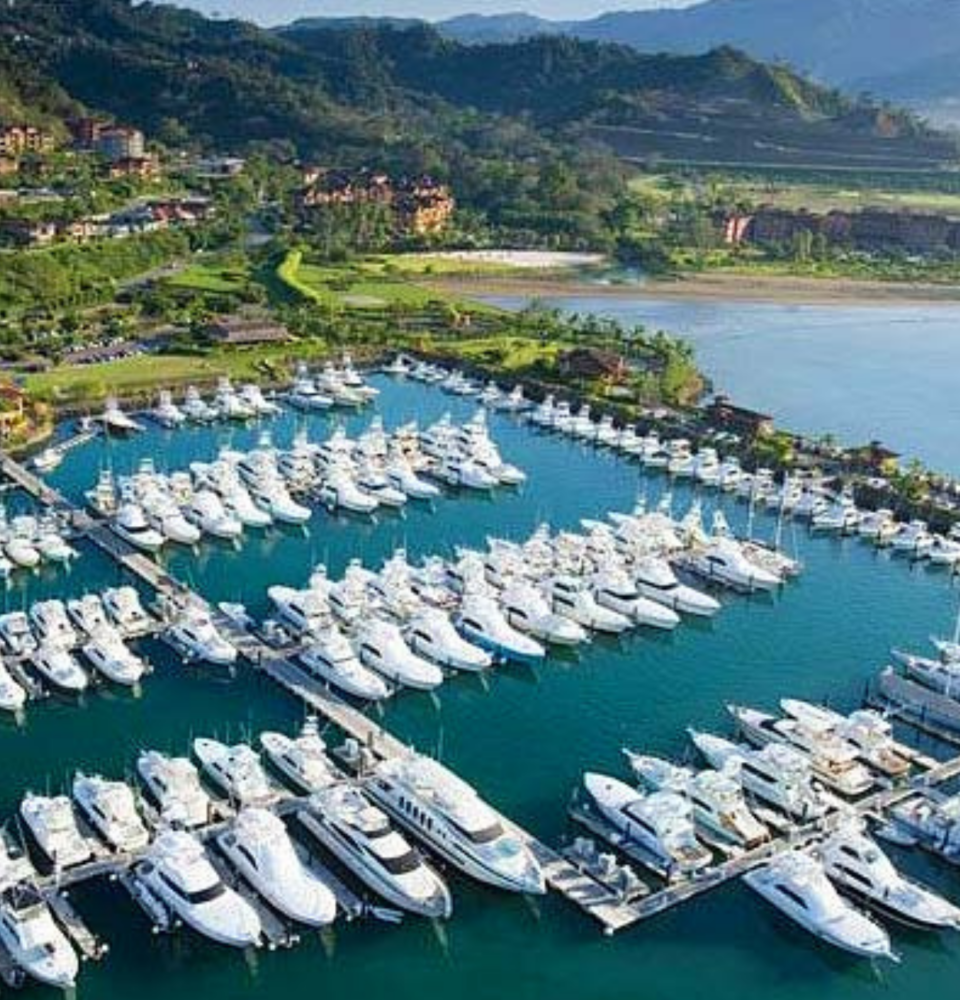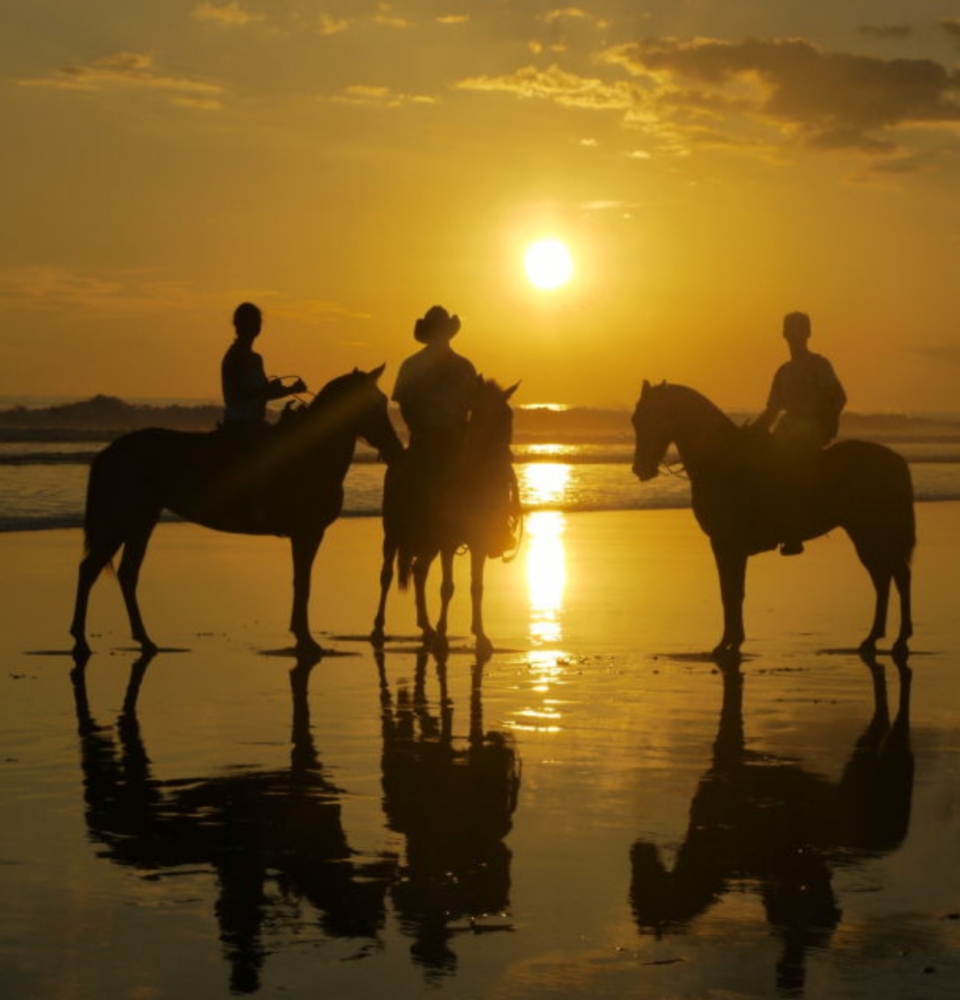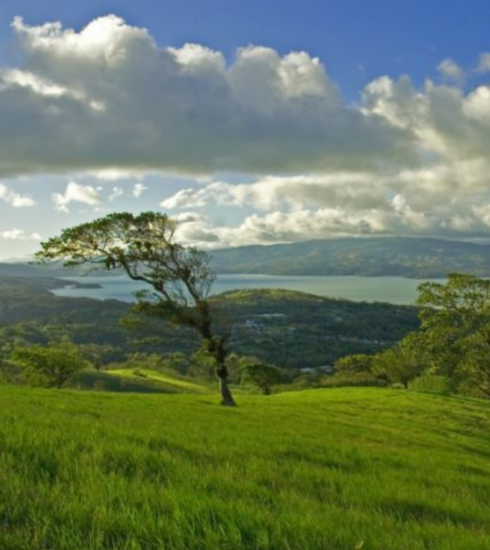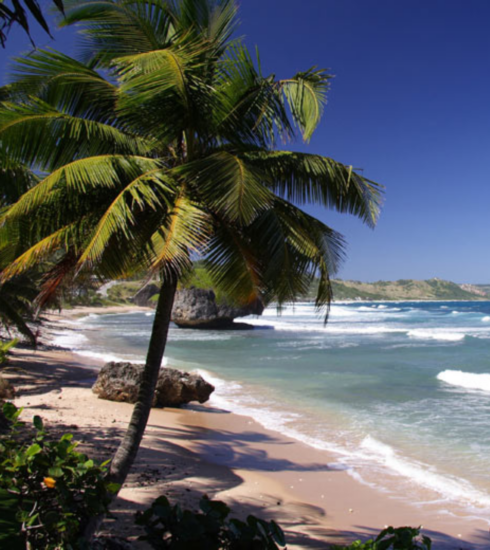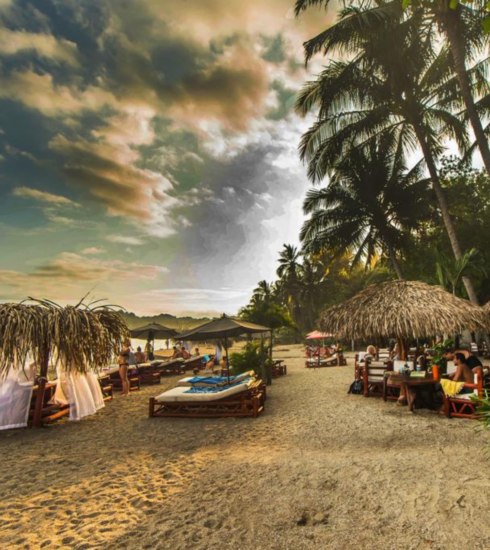Playa Nosara, Costa Rica
The main beach of Nosara is Playa Guiones, six kilometers of immaculate white sand stretching in a straight beautiful line from Punta Pelada in the north to Punta Guiones to the south. Easily accessible, Guiones is the best surf spot in the area, with consistent long waves and both left and right breaks. The shell-strewn beach of Playa Pelada to the north of Guiones is protected by an offshore barrier reef, making it suited for swimming. Around Playa Pelada there are tidal pools and natural caves at the northern end of the bay.
Landscape: Beaches, Rainforest, Tropical Dry Forest.
Attractions: Quiet beach town – excellent surf – wildlife refuges and tours.
Activities: Bird & Wildlife Watching, Surfing, Turtle Tours.
Caters to: Budget Travelers, Families, Nature Lovers, Surfers.
At low tide it is possible to walk from Playa Pelada north past the rocky cliff to the estuary of the Rio Nosara. Wading through the river brings you to Playa Nosara, the most remote of the Nosara beaches. The black-sand beach is backed by mangroves and runs into the turtle beach of Ostional. The surf is a treat for experienced surfers, as some of Costa Rica’s tallest waves may be found at Playa Nosara. Swimming however is not advisable here except for the strongest and most experienced of ocean swimmers.
At the south of Playa Guiones is Playa Rosada, or Pink Beach, a rare pink stretch of sand that boasts very few visitors to its sun-warmed tide pools ideal for isolated relaxation or casual snorkeling. Nosara is probably most noted for the “Blow Hole,” toward the southern end of the bay. The spray is at its best during the transition of the tides, and provides visitors with a natural shower.
Nearly half of the land in the Nosara area is protected forest, with strict prohibitions on logging and felling of trees. The abundant wildlife found in Nosara may be attributed to the prohibitions, and the moratorium on hunting, established over twenty years ago in the area. North of Nosara lies the Ostional Wildlife Reserve, which has recently been extended to include the beachs of Playa Nosara, making the wide strip of coastal vegetation an additional protected zone.
Nosara is a protected jewel that is on the “must-see” list for many ecologically minded tourists. In addition to being an exceptional spot ideal for isolation and relaxation, when visiting Nosara you can venture into the Biological Reserve and learn about animals and plants of the dry tropical forest, take a boat to explore the river estuaries, or visit the turtle beach of Ostional.
The town of Nosara is a quiet community with strong local ties. There are a handful of moderately priced hotels and restaurants, a few churches, one pharmacy, a post office, a school, and one library. The nonprofit David S. Kitson Library received its name from one of the most dedicated members of the Nosara community and has been established to foment the education of children and adults in the area. It is a center for community activities such as arts and crafts, aid to students, and children’s story time. Internet service is provided to the community and foreign visitors. Monetary or book contributions from visitors are welcome and appreciated.
How to get there:
From San Jose: The shortest route to Nosara is on Autopista del Sol to Caldera, where you keep driving towards Puntarenas. When you pass Puntarenas, turn left and follow signs to the Friendship Bridge (Puente de la Amistad in Spanish). Cross the bridge and follow the road signs to Nicoya. Drive straight through town until you see signs for Nosara and follow the well-signaled road there. The roads leading into Nosara can get rough during the rainy season, so it’s best to stick to daytime driving and use a 4WD.
Fun facts:
The beaches of Nosara host one of the oldest expat communities in Costa Rica. In 1962 a US citizen bought the entire expanse of land along the coastline of Nosara. He initiated “The Nosara Project”, a development slated for 500 residential lots interspersed with commercial sites, green zones, and a golf course. He built roads and water systems, and installed electricity. After some years however the project came to a halt for financial reasons.
Individual investors then acquired portions of the land, and property owners organized themselves into the Nosara Civic Association (NCA) which continued to manage the project.
The Guanacaste province belonged to Nicaragua during the Colonial period. It wasn’t until after the nations of Central America gained independence from Spain that it was annexed and incorporated to Costa Rica on July 25, 1825. The government recognizes this date as a National holiday even though the boundary lines weren’t changed until 1858.
Explore Playa Nosara
Playa Tamarindo, Costa Rica
Tamarindo's white sand and warm blue water has some of the most famous sunsets in Costa Rica.
Playa Samara, Costa Rica
Samara is a cozy, little beach village, perfect to soak up beach life and 'pura vida’ atmosphere.
